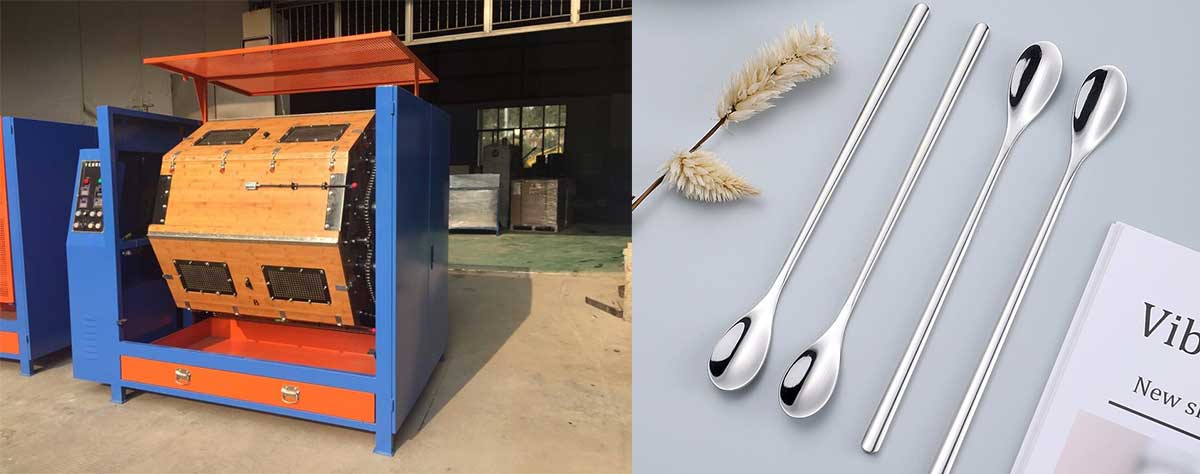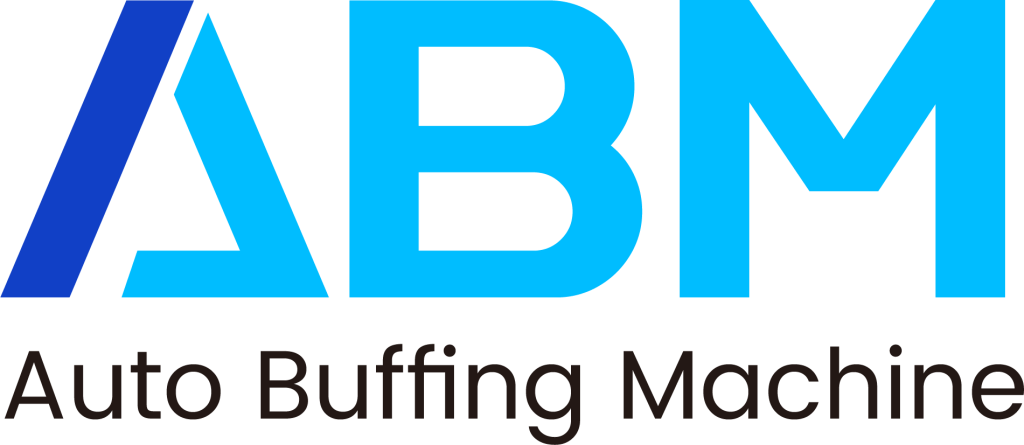

Thin-walled metal parts often face challenges during buffing due to their delicate structure. Excessive pressure or improper techniques can lead to distortion, compromising the quality of the final product. Industrial buffing machines play a crucial role in maintaining precision while avoiding distortion. These machines provide consistent performance, ensuring uniform results across surfaces. Proper selection of tools and techniques is essential for achieving high-quality finishes. By understanding the mechanics of buffing and using the right equipment, manufacturers can enhance the durability and appearance of thin-walled components.
Key Takeaways
- Watch heat levels while buffing to stop bending. Use coolants and change machine speed to keep it safe.
- Pick the right buffing pads for thin parts. Use pads made for soft materials to avoid marks or damage.
- Keep steady pressure when buffing. Check machines often to make sure pressure stays even for a smooth look.
- Change machine settings for material thickness. Use slower speeds and better feed rates to lower heat and shaking.
- Check and care for buffing machines often. Following maker rules helps them work well and avoids problems.
Understanding the Causes of Distortion in Thin-Walled Metal Parts
Excessive Heat from Buffing Polish Machines
Excessive heat generated during the buffing process can lead to significant distortion in thin-walled sheet metal. Industrial buffing machines, when operated at high speeds or with improper settings, produce friction that raises the temperature of the metal surface. This heat can cause warping, especially in delicate components. For instance:
- Perchloric acid becomes unstable at temperatures exceeding 100°F (38°C), highlighting the risks of excessive heat during polishing.
- Thin-walled materials are particularly vulnerable to thermal expansion, which can permanently alter their shape.
To prevent distortion, operators must monitor heat levels closely. Using cooling agents or adjusting the machine’s speed can help maintain safe temperatures. Properly managing heat during polishing ensures the integrity of the sheet metal.
Uneven Pressure During Buffing
Uneven pressure applied by industrial buffing machines can also cause distortion. When pressure is not evenly distributed, certain areas of the sheet metal may experience excessive force, leading to dents or irregularities. A study of pressure measurements during semiconductor polishing processes reveals the importance of even pressure distribution:
| Aspect | Description |
|---|---|
| Pressure Measurement | Real-time monitoring ensures even pressure distribution. |
| Impact of Uneven Pressure | Prevents defects like die cracking and ensures effective polishing. |
| Equipment State Measurements | Proper alignment of polishing heads avoids improper particle removal. |
| I-Scan System | Identifies pressure variations, enabling machine adjustments. |
Operators should regularly inspect and calibrate their machines to ensure consistent pressure. This practice minimizes the risk of distortion and enhances the quality of the polished surface.
Inappropriate Buffing Pad Selection
The choice of buffing pad plays a critical role in preventing distortion. Pads that are too coarse or too soft may fail to provide the necessary balance between abrasion and support. Thin-walled sheet metal requires pads specifically designed for delicate surfaces. Using inappropriate pads can lead to uneven polishing, scratches, or even structural damage.
Selecting the right buffing pad involves considering the material’s thickness and the desired finish. Manufacturers should also pair the pad with suitable polishing agents to achieve optimal results. Proper pad selection not only prevents distortion but also enhances the overall efficiency of the buffing process.
Incorrect Machine Speed and Settings
Incorrect speed and settings on a buffing machine can significantly impact the integrity of thin-walled metal parts. Machines operating at excessively high speeds generate unnecessary friction. This friction increases the surface temperature, which can lead to warping or other forms of distortion. On the other hand, speeds that are too low may fail to achieve the desired finish, resulting in uneven surfaces or prolonged processing times.
Operators must carefully calibrate the machine’s speed based on the material’s thickness and sensitivity. For instance, thin-walled components often require lower speeds to minimize heat buildup. Adjusting the settings to match the specific requirements of the material ensures a smoother and safer buffing process.
Modern buffing machines often come equipped with adjustable speed controls. These controls allow operators to fine-tune the machine’s performance for delicate parts. Utilizing these features effectively can prevent damage and improve the overall quality of the finish. Additionally, regular maintenance of the machine ensures that its settings remain accurate and reliable over time.
Tip: Always refer to the manufacturer’s guidelines when setting up a buffing machine. These recommendations provide valuable insights into the optimal speed and settings for various materials.

Best Practices for Avoiding Distortion
Selecting the Right Buffing Pads for Thin-Walled Components
Choosing the correct pads is crucial for achieving high-quality results in buffing thin-walled sheet metal. Pads that are too abrasive can damage the surface, while overly soft pads may fail to provide adequate support. Thin-walled components require polishing pads specifically designed for delicate materials. These pads ensure a balance between effective polishing and structural integrity.
Manufacturers should select the right polishing pads based on the material’s thickness and the desired finish. For example, foam or felt pads often work well for thin-walled parts, as they minimize the risk of scratches or distortion. Pairing these pads with appropriate polishing agents further enhances the quality of the finish. Regularly inspecting and replacing worn pads also helps maintain consistent results during the buffing process.
Applying Consistent Pressure with Industrial Buffing Machines
Maintaining consistent pressure is essential for preventing distortion in thin-walled components. Uneven pressure during buffing can create stress imbalances, leading to bending or twisting of the sheet metal. Industrial buffing machines equipped with advanced pressure control systems help operators maintain consistent pressure across the surface.
- Consistent pressure ensures a smooth and distortion-free finish.
- Uneven pressure can cause stress imbalances, resulting in defects like bending or warping.
- Steady force across the surface enhances the overall quality of the polished part.
Operators should regularly calibrate their machines to maintain consistent pressure. Using proper techniques, such as moving the machine evenly across the surface, also minimizes the risk of distortion.
Monitoring Heat Levels to Prevent Warping
Monitoring heat levels during buffing is critical for preventing warping in thin-walled sheet metal. Excessive heat generated by friction can cause thermal expansion, leading to permanent deformation. Experimental studies on processes like laser powder bed fusion highlight the importance of controlling heat to maintain the integrity of delicate parts. High temperatures, combined with rapid cooling rates, often result in warping near the edges of components.
Operators should monitor heat levels closely during the buffing process. Adjusting the machine’s speed and using cooling agents can help prevent excessive heat buildup. Additionally, modern buffing machines often include temperature monitoring features, allowing operators to take corrective actions in real time. By managing heat effectively, manufacturers can achieve high-quality finishes while preventing warping.
Using Proper Buffing Techniques for Delicate Parts
Proper buffing techniques are essential for maintaining the integrity of thin-walled components. Operators must handle delicate parts with precision to avoid deformation. One effective approach involves using slow, controlled movements during the buffing process. This minimizes the risk of uneven polishing and reduces stress on the sheet metal. Additionally, operators should avoid lingering on one spot for too long, as this can generate excessive heat and lead to warping.
Another key technique is to maintain a consistent angle between the buffing pad and the surface. This ensures even contact and prevents unnecessary pressure on specific areas. For thin-walled parts, using a light touch is critical. Excessive force can cause bending or distortion, especially in materials with low structural rigidity.
Operators should also clean the surface thoroughly before starting the buffing process. Dirt or debris can create scratches or imperfections, compromising the final finish. Following these techniques helps achieve a smooth, distortion-free surface while preserving the structural integrity of the material.
Adjusting Buffing Polish Machine Settings for Thin-Walled Materials
Adjusting the settings of a buffing machine is crucial for working with thin-walled materials. Incorrect settings can lead to excessive heat, vibration, or uneven polishing, all of which contribute to deformation. Operators should follow manufacturer guidelines to ensure optimal performance.
The table below highlights key factors and their impact on deformation:
| Factor | Impact on Deformation |
|---|---|
| Cutting Speeds | Higher speeds can lead to increased deformation due to heat and tool wear. |
| Feed Rates | Incorrect feed rates can cause excessive vibration and tool deflection, affecting finish and accuracy. |
| Tool Path Optimization | Optimizing tool paths is crucial to limit material deformation and achieve desired outcomes. |
For thin-walled sheet metal, operators should use lower cutting speeds to minimize heat buildup. Adjusting feed rates can also reduce vibration, which helps maintain a smooth finish. Tool path optimization ensures even material removal, preventing localized stress that could lead to warping.
Industrial buffing machines often include advanced features like speed controls and temperature monitoring. These tools allow operators to fine-tune the process for delicate parts. Regular maintenance of the machine ensures that settings remain accurate over time. By making these adjustments, manufacturers can achieve high-quality results while protecting the structural integrity of thin-walled components.
Tip: Always follow manufacturer guidelines when adjusting machine settings. This ensures safe and efficient operation, reducing the risk of damage to delicate materials.
Conclusion
Distortion in thin-walled metal parts often arises from residual stresses, uneven pressure, excessive heat, or improper machine settings. Residual stresses, including machining-induced and bulk stresses, disrupt equilibrium during material removal, leading to deformation. These stresses, combined with factors like wall thickness and machining strategies, significantly influence the extent of distortion.
Implementing effective techniques ensures high-quality results. Tips for avoiding distortion include selecting appropriate buffing pads, maintaining consistent pressure, and monitoring heat levels. Operators should also inspect and maintain the industrial buffing machines regularly to ensure optimal performance. Adjusting machine settings to suit thin-walled materials further minimizes risks.
Safety and maintenance remain critical for long-term success. Regular inspections and adherence to manufacturer guidelines enhance machine reliability and prevent operational issues. By following these practices, manufacturers can achieve precision and durability in their buffing processes.

FAQ
What is the best way to prevent heat buildup during buffing?
Operators should monitor the temperature closely and adjust the machine’s speed to reduce friction. Using cooling agents or specialized buffing pads designed for heat dissipation can also help. These methods ensure the metal remains within safe temperature limits, preventing warping or distortion.
How often should buffing pads be replaced?
Buffing pads should be inspected regularly for wear and tear. Replace them when they lose their effectiveness or show visible damage. Frequent replacement ensures consistent results and prevents scratches or uneven finishes on thin-walled metal parts.
Can improper buffing techniques damage thin-walled components?
Yes, improper techniques can cause significant damage. Excessive pressure, uneven movements, or lingering on one spot can lead to distortion or scratches. Operators should use controlled, even strokes and maintain consistent pressure to protect the structural integrity of delicate parts.
What machine settings are ideal for thin-walled materials?
Lower speeds and optimized feed rates work best for thin-walled components. These settings minimize heat buildup and vibration, reducing the risk of deformation. Operators should follow the manufacturer’s guidelines to fine-tune the machine for specific materials.
Why is pad selection critical in the buffing process?
The right pad ensures a balance between abrasion and support. Thin-walled parts require pads designed for delicate surfaces to avoid scratches or structural damage. Proper pad selection enhances the efficiency of the buffing process and ensures high-quality finishes.
